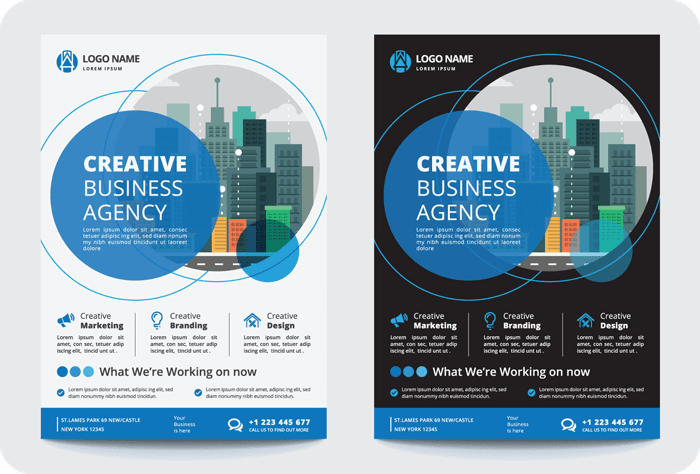Creating a custom brochure design involves careful planning and attention to detail. Replica can help you finalize the file and print it, but the content is up to you. Here are some best practices to consider when conceptualizing and designing your new brochure:
- Define Your Purpose and Audience: Clearly understand the purpose of the brochure and the target audience. Whether it’s to promote a product, service, event, or provide information, your design should align with the goals and resonate with the intended recipients.
- Set Clear Hierarchy: Organize your content with a clear hierarchy. Use headings, subheadings, and varying font sizes to guide readers through the information. Make sure the most important information stands out.
- Concise Content: Keep your content concise and focused. Brochures are meant to provide a snapshot of information, so avoid overwhelming readers with excessive text. Use bullet points, short paragraphs, and captivating visuals.
- Eye-Catching Cover: The cover is the first thing people see. Create a compelling and visually appealing cover that grabs attention and entices readers to open the brochure.
- Branding Consistency: Maintain consistent branding elements, such as colors, fonts, and logos, throughout the brochure. Consistency reinforces your brand identity and makes your brochure more memorable.
- Visual Elements: Use high-quality images, graphics, and icons that relate to your content. Visuals should complement the text and help convey your message effectively.
- Whitespace: Don’t overcrowd the design. Incorporate enough whitespace to create a balanced and clean layout. This makes the brochure easier to read and navigate.
- Typography: Choose fonts that are easy to read and appropriate for your brand’s tone. Limit the number of font styles to maintain a cohesive and professional look.
- Color Palette: Use a consistent color palette that aligns with your brand and creates a visually pleasing design. Be mindful of color psychology and how different colors evoke different emotions.
- Call to Action (CTA): Include a clear and compelling call to action that tells readers what you want them to do next. Whether it’s visiting a website, making a purchase, or attending an event, the CTA should stand out.
- Paper Quality and Printing: Choose a paper type that suits the purpose of the brochure. The paper’s texture, weight, and finish contribute to the overall impression. When printing, work with a professional printing service to ensure high-quality results.
- Folding and Layout: Consider the folding style of your brochure (bi-fold, tri-fold, gatefold, etc.) and how it affects the layout. Ensure that the content flows logically as readers unfold the brochure.
- Testimonials and Social Proof: If relevant, include customer testimonials, reviews, or endorsements to build credibility and trust with your audience.
- Adaptability: Design your brochure in a way that it can be easily adapted for digital use, such as in PDF format for online sharing or email distribution.
Remember, the key is to create a visually appealing and informative design that effectively communicates your message while engaging your audience. With a carefully considered design, Replica can help you bring your vision to life.


